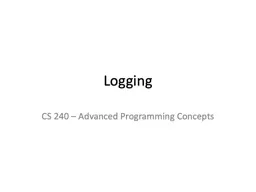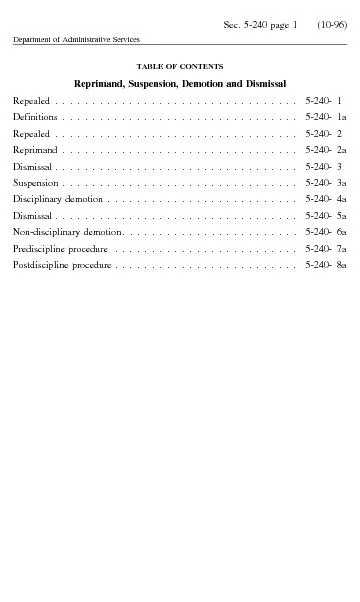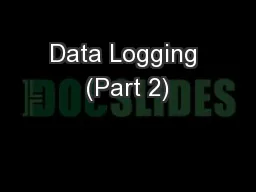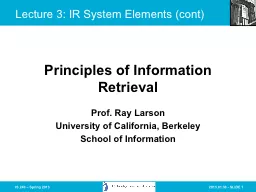PPT-Logging CS 240 – Advanced Programming Concepts
Author : askindma | Published Date : 2020-08-06
Java Logging Java has builtin support for logging Logs contain messages that provide information to Software developers eg debugging System administrators Customer
Presentation Embed Code
Download Presentation
Download Presentation The PPT/PDF document "Logging CS 240 – Advanced Programming ..." is the property of its rightful owner. Permission is granted to download and print the materials on this website for personal, non-commercial use only, and to display it on your personal computer provided you do not modify the materials and that you retain all copyright notices contained in the materials. By downloading content from our website, you accept the terms of this agreement.
Logging CS 240 – Advanced Programming Concepts: Transcript
Download Rules Of Document
"Logging CS 240 – Advanced Programming Concepts"The content belongs to its owner. You may download and print it for personal use, without modification, and keep all copyright notices. By downloading, you agree to these terms.
Related Documents









![[PDF]-Programming 3: Python Programming Professional Made Easy & C Programming Success](https://thumbs.docslides.com/980147/pdf-programming-3-python-programming-professional-made-easy-c-programming-success-in-a-day-c-programming-c-programming-c-programming-language-html-python-programming-python-java-php.jpg)
![[FREE]-Programming 16: Python Programming In A Day & C Programming Professional Made Easy](https://thumbs.docslides.com/980148/free-programming-16-python-programming-in-a-day-c-programming-professional-made-easy-c-programming-c-programming-c-programming-language-html-python-python-programming-coding-css-java-php.jpg)


